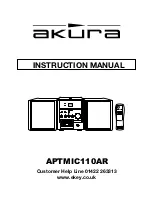
Revision C • 12/05
H
A
R
R
I
S
C
O
R
P
O
R
A T
I
O
N
8
Logic Connections
There are three logic connectors on the SMX
d:
• J29, a 12-pin AMP MOD IV connector, with the
warning tally output, talk tally output and external
talk logic input.
• J30, a 14-pin AMP MOD IV connector, for connect-
ing an optional Harris mic panel to control Channel
1. When a mic control panel is connected, it func-
tions in parallel with the front panel on/off and talk
buttons.
• J33, a 15-pin female D-sub connector, with Channel
2 - 7 start logic outputs and a timer reset output.
The J29 Tally outputs are solid-state versions of dry con-
tact relays. The two Warning Tally contacts are a sustained
contact closure while any Mic channel is On. The two Talk
Tally contacts are a sustained contact closure while the Talk
button is pressed on either channel 1 or the optional mic con-
trol panel. Each tally output can switch logic controls using
up to 60 VDC at 350 mA.
External Talk (-) is a logic input, that when pulled low, while
Activate Ext. Talk (+) is connected to +5 volts, routes Exter-
nal Talk audio to the room monitor and headphone outputs.
J30 is used to plug in an optional Harris mic control panel
for remote control of the Channel 1 functions On, Off, Cough
and Talk at a remote mic location. The mic control panel func-
tions in parallel with the front panel buttons.
TRS Stereo Input & Headphones Output
There are two 1/4" unbalanced stereo TRS (Tip-Ring-Sleeve)
connectors on the front panel of the rack version. For both,
the Tip is the left channel, the Ring is the right channel and
Sleeve is ground. The STEREO IN 4 TRS jack is a -10 dBv
analog input for temporarily plugging in a portable stereo au-
dio device into Channel 4. The second TRS jack (labeled
to
the left of the channel 1 controls), is a standard stereo output
jack for the talent’s headphones.
On the desktop version, the TRS input jack (STEREO IN 4
TRS) is to the right of the meter display on the meter panel.
The talent’s headphone jack is inset in the left side panel, a
few inches back from the front left corner of the SMX
d.
Note:
The TRS input jack audio is summed with audio on
J3 (the Input 4 connector). Unless this is a desired function,
do not use J3 and the front panel TRS input simultaneously.
Typical Audio Connections and DIPswitch Settings
Connect the preamp output of the board operator/talent’s
mic to pins 4, 5, 6 of J6, Mic (In 1). Set internal DIPswitch
DS1-1 to on (on is toward the back panel).
One or two additional mic preamps can connected to in-
puts 2 or 3. When a mic is connected to J1 (Input 2), set
DIPswitch DS1-2 to on. When a mic is connected to J2 (Input
3), set DIPswitch DS1-3 to on.
Connect a Telco device (a phone hybrid, ISDN, or any 2-
way device that requires a mix-minus return signal) to any
available analog or digital input (analog inputs are J1, J2
and J3, digital inputs are J13, J14 and J15).
DIPswitches DS1-4, -5, -6 define which input is the Telco
channel per Table 1 on the next page. The return mix-minus
feed to the Telco device connects to pins 1, 2 and 3 of J9 (for
an analog return feed) or to J18 (for a digital return feed).
12-pin Warning and Talk Logic Connector
Ground
Talk Tally
Talk Tally
+5 Volts
+5 Volts
Activate Ext. Talk (+)
+5 Volts
Warning Tally
Warning Tally
Ground
Ground
External Talk (-)
6
5
4
3
2
1
12
11
10
9
8
7
14-pin Mic Remote Panel Logic Connector
Activate Logic (+)
Tallies Common
+5 Volts
N/C
On Tally
Off Tally
Ground
+5 Volts
+5 Volts
Ground
Talk Switch (-)
Cough Switch (-)
On Switch (-)
Off Switch (-)
7
6
5
4
3
2
1
14
13
12
11
10
9
8
15-pin Start & Timer Reset Logic Connector
8 7 6 5 4 3 2 1
15 14 13 12 11 10 9
1& 9 Timer Reset
2 & 10 - Ch 2 Start Pulse
3 & 11 - Ch 3 Start Pulse
4 & 12 - Ch 4 Start Pulse
5 & 13 - Ch 5 Start Pulse
6 & 14 - Ch 6 Start Pulse
7 & 15 - Ch 7 Start Pulse
8 - no connection




























